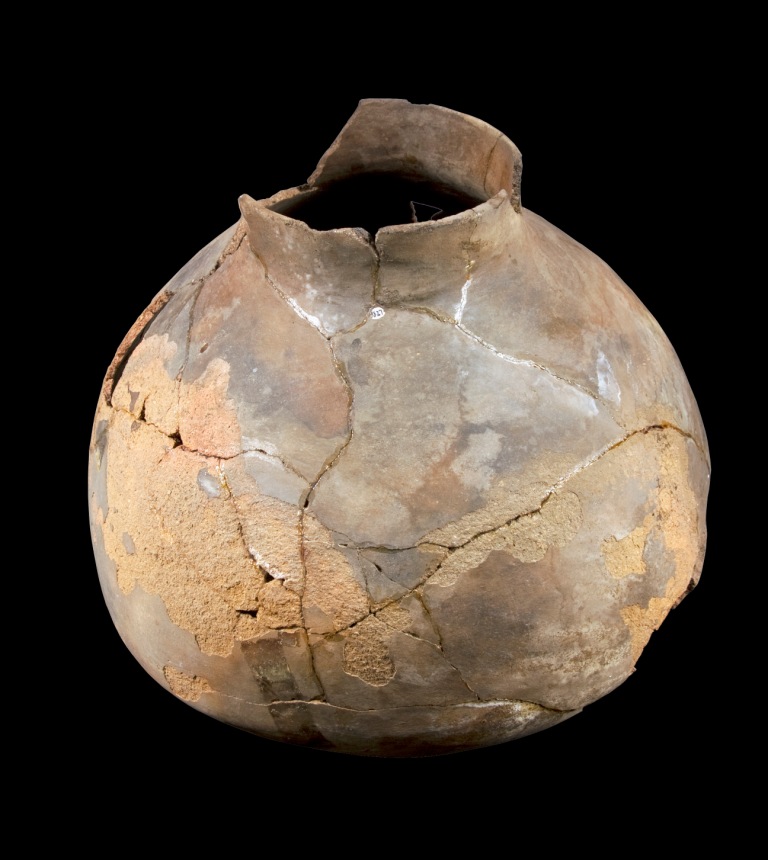Angell Brown is a type of Alameda Brown Ware found in the black sand area of northern Arizona (around the San Francisco Peaks).
Archaeological Culture: Sinagua
Date Range: A.D. 1000-1150.
Construction: Paddle and anvil.
Firing: In an oxidizing atmosphere.
Core Color: Usually brown.
Carbon Streak: Present.
Temper: Mostly individual crystals of sanadine; fine angular fragments of crushed volcanic tuff (gray, white, buff, or reddish) present, but not abundant.
Surface Finish: Outside smoothed, wiping marks often show; interiors not well polished. Anvil marks conspicuous even in bowls.
Surface Color: Buff, orange to dark brown or gray.
Forms: Bowls and jars; Gila shoulder common.
Vessel Thickness: 5.5 to 6.5 mm; average 6 mm (bowls); 6.0 to 10 mm; average 8.5 mm (jars).
Decoration: None.
Comparisons: Differs from typical Winona Brown in the temper being finer, less abundant, and with more crystals. This variety lies between Rio de Flag Brown and Winona Brown and is not a very important indicator of time.
Other Names: Winona Brown.
Compiled from the following sources:
Colton, Harold. (1958) Pottery Types of the Southwest. Museum of Northern Arizona Ceramic Series No. 3D. Flagstaff, Arizona.
Compiled by:
April Peters, Northern Arizona University Anthropology Laboratories.

